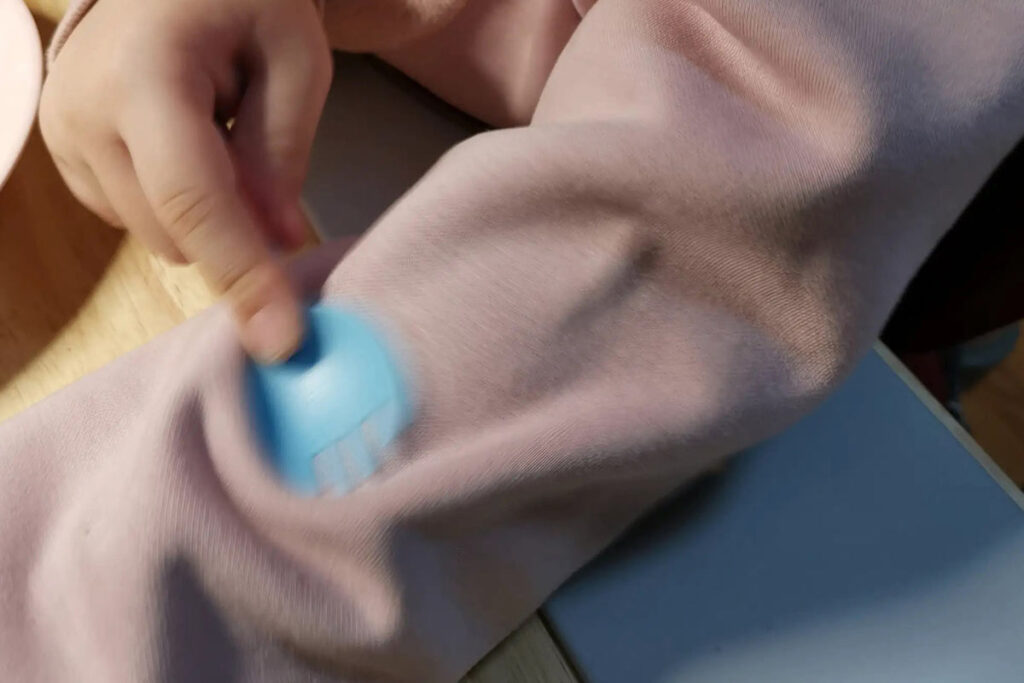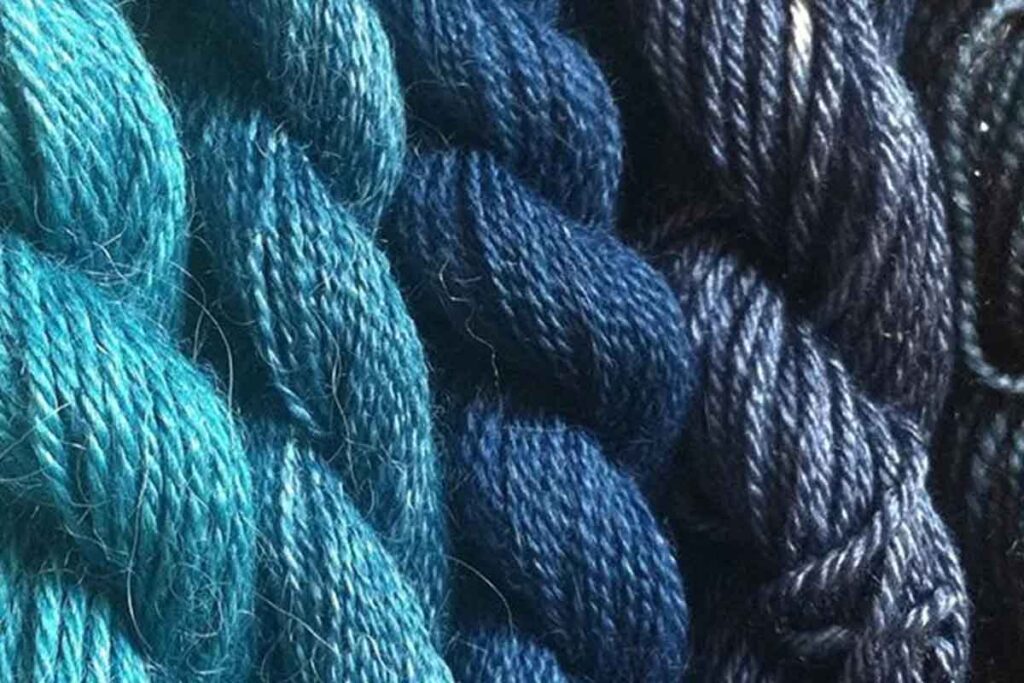Fabric color fastness refers to the ability of the fabric to fade or lose color easily under different degrees of washing, rubbing, sweating, and other conditions. Colorfastness is an important index for evaluating the quality of fabrics and is one of the bases for setting international standards. Colorfastness is usually divided into the following categories according to different usage occasions: soap resistance, rub resistance, light resistance, bleach resistance or oxidizer (reducer) resistance, ironing resistance, sweat resistance, and light sweat fastness, etc.
Among them, soap resistance, rub resistance, light resistance, water resistance, and sweat resistance is the actual production and trade in most clothing brand sellers pay more attention to several color fastness index.
Soap resistance color fastness
How to test the color fastness to soaping
Soap fastness is one of the most common color fastness assessment items. Soaping color fastness refers to the color fabric in the specified conditions after soaping fading degree; it includes the original fading and white cloth staining, two evaluation content. The original fading refers to the coloring fabric fading before and after soaping; white cloth staining is white cloth and coloring fabric sewn together in a certain way after soaping because of the coloring fabric fading and white cloth staining situation. The degree of fading or staining should be tested under the specified light source with a standard gray card rating. The results are divided into 5 levels, 5 for the best and 1 for the worst. Generally, color fastness to 3-4 levels or more cannot fade easily.

Factors affecting the color fastness of soaping
In daily tests, a significant portion of textiles, including cotton, wool, polyester, nylon, and its blended fabrics, as well as spandex-containing elastic fabrics, staining of nylon, and acetate fiber lining, is at level 3 or below. Although the dyestuffs and printing and dyeing processes used vary from fiber material to fiber material, the problems that arise are quite similar. This is mainly related to the transfer of floating colors and part of the colored fiber particles on the fabric surface and, therefore, to the variety of dyestuffs used, the dyeing process, and the post-dyeing treatment process.
In the case of reactive dyestuff, for example, theoretically, since dyestuff and fiber form a covalent bond, washing does not easily cause dye desorption, fading, and bleeding. Therefore, the color fastness of soaping reactive dyeing products is determined by the amount of unconsolidated dyestuff (hydrolyzed dyestuff and a small amount of unreacted dyestuff). If the hydrolyzed dyestuff is not removed by soaping, subsequent washing will result in continuous color loss. Soap fastness is also related to the bonding stability of bonded dyes, and broken bond dyes will also occur in the wash. Therefore, the most important factor affecting the color fastness of soaping is the structure and performance of the dye, followed by the dyeing and post-dyeing process. Reactive dyestuff with a high fixation rate or slow hydrolysis rate and a low amount of hydrolyzed dyestuff require less dye removal by washing. Unconsolidated and hydrolyzed dyes have a low directness, good water solubility, are not easy to stain, and are easy to wash out. The high concentration of dyestuff and the amount of residual dyestuff are not easy to be washed out.
How the dyeing process affects soaping fastness
In addition, soap fastness is also closely related to the dyeing process. Dye adsorption and diffusion are sufficient, the rate of color fixation is high, residual dyes and hydrolyzed dyes are less, and easy to wash out. The dyeing process is reasonable. The covalent bond between the dye and fiber is not easy to break during dyeing, and soap fastness is better post-treatment.
Rubbing resistance color fastness
How to test the color fastness to rubbing
The rubbing color fastness test is to rub the color specimen with a dry rubbing cloth and wet rubbing cloth and then assess the degree of rubbing cloth color staining test. Test results are divided into 5 levels, 5 levels of the best and 1 level of the worst. Generally speaking, color fastness of 3-4 levels or more can be considered not easy to lose color. Although the test process is simple, it is the most basic color fastness assessment index of textile products and is one of the items that buyers from almost all countries must assess when placing orders. The technical conditions of the friction fastness test standards are very similar, but there are some differences.

Factors affecting rubbing fastness
Textiles and other objects rubbing process, its color shedding or the degree of color staining of the object being rubbed by many factors. Color shedding staining occurs in two ways: First, the textile dye shedding or color loss, staining the surface of the friction object; Second, the dyed fiber off, adhering to the surface of the friction object.
Dye shedding is the main cause of color staining.
Although different chemical structures of reactive dyestuff and cellulose fiber formation of covalent bond strength and adhesion, there are certain differences. Still, the impact on the wet friction color fastness of dyed fabrics is basically the same. When dyed fabrics are rubbed wet, the covalent bonds formed between dyestuff and fiber do not break and produce floating colors. The transferred dye usually does not form a covalent bond with the fiber but is only adsorbed by van der Waals forces, i.e., floating color.
Lightfastness
How to test lightfastness
The light fastness test means that the textile specimens and a group of blue wool specimens are exposed to artificial light under the specified conditions. Then the two are compared for the color change to assess the color fastness. Generally speaking, color fastness of 4-5 levels or more can be considered difficult to fade or change color.

How to improve the light fastness of dyes
The mechanism of light fading of dyes is very complicated. Still, mainly the dyes absorb photons and are radicalized, and a series of photochemical reactions occur to destroy the structure, leading to color change and fading. The light fastness of textiles depends mainly on the chemical structure of the dye and its aggregation state, bonding state, and mixed color combination. Therefore, it is very important to choose dyestuff reasonably.
For cellulose fiber textiles, dyestuffs with better resistance to oxidation should be used; for protein fibers, dyestuffs with better resistance to reduction or containing weak oxidizing additives should be used; for other fibers, dyestuffs should be selected according to their effect on fading. To enhance the photo-oxidation resistance of the azo group in the molecular structure of dyestuff, some strong electron-absorbing groups are usually introduced in the neighboring positions of the azo group during the synthesis of dyestuff, thus reducing the electron cloud density of the azo gas atoms. In addition, hydroxyl groups can be attracted to the two neighboring positions of the azo group. Their coordination ability can be used to complex with heavy metals, thus reducing the electron cloud density of the hydrogen atoms of the azo group and playing a shielding role to the azo group, and finally improving the light fastness of the dyes.
The darker the color, the better the light fastness
Many tests have proved that the light fastness of reactive dyes on cellulose fibers is proportional to the shade of the dyed color. This is because the higher the concentration of dyestuff on the fiber, the greater the aggregation of dye molecules, the smaller the surface area of the same amount of dyestuff in contact with air, moisture, and light, and the lower the chance of dyestuff being oxidized by light. Conversely, the lighter the color, the more highly dispersed the dyestuff is on the fiber and the higher the chance of exposure to light, which eventually makes the light fastness significantly lower. Therefore, dyeing light-colored varieties should be selected with higher lightfastness dyes. In addition, many finishing agents such as softener and anti-wrinkle finishing agents are added to the fabric, which will also reduce the light fastness of the product. Therefore, dyes that are not sensitive to these finishing agents should be used.
Choose dyestuff with good light, fastness, and stability for color matching
Different dyes have different fading properties and even different light fading mechanisms. Sometimes, the presence of a dye will sensitize the fading of another dye. When color matching, should choose each other will not be sensitized, and it can even improve the light stability of dyes, which is particularly important when dyeing dark varieties such as black. One of the three primary colors fades too quickly, which will soon lead to discoloration of the dyed fiber or fabric. The faded dye residue will also affect the light stability of the other two dyes that have not faded. Reasonable control of the dyeing process so that the dyestuff and fiber are fully combined, as far as possible, to avoid hydrolysis of dyestuff and unconsolidated dyestuff residue on the fiber is an important way to obtain a high light fastness.
Water resistance and fastness to sweat stains
How to test water and perspiration fastness
Water resistance color fastness reflects the textile in a certain moisture, pressure, and temperature under the joint action of their discoloration and staining of the lining fabric. When testing, the specimen, and the lining fabric are fully wet; in the case of a certain pressure, load into a certain temperature oven for a certain period of time, taken out to dry, and evaluate the color change and staining grade. Color change and staining grades are divided into 5 levels, 5 levels of the best and 1 level of the worst. Colorfastness to 3-4 grade or more cannot be easy to fade.
Colorfastness to perspiration reflects the textile in different test solutions containing histidine, under the joint action of pressure and temperature, its discoloration and staining of the lining fabric. Using the gray card to assess the specimen’s discoloration and the lining fabric’s staining, the results are divided into five levels, with level 5 being the best and level 1 being the worst. Generally, color fastness to 3-4 levels or more cannot fade easily.

The way to improve the color fastness of water and sweat resistance
The main way to improve the color fastness of water and sweat resistance of fabrics is to choose dyestuffs reasonably, especially dyestuffs with a high fixing rate and good stability should be chosen. Reasonable formulation and control of the dyeing process to strengthen the color fixation conditions, forming covalent bonds with high stability can make the dye fully fixed. For example, a catalyst can be used for dyeing less reactive dyestuff, and an appropriate color fixing agent or color fixing at higher temperatures can be used.
Conclusion
Different fabrics and dyeing methods will have different color fastness requirements, so when looking for a clothing manufacturer, you need to know the dyeing method and treatment process of the fabrics commonly used by the supplier, as well as the corresponding color fastness standards. At the same time, you also need to pay attention to the washing methods and maintenance methods marked on the wash label to prolong the service life of the garment. When conditions allow, the best solution is to find an experienced supplier who can guarantee the color fastness and production quality of the fabrics to the greatest extent.

